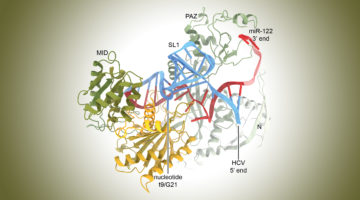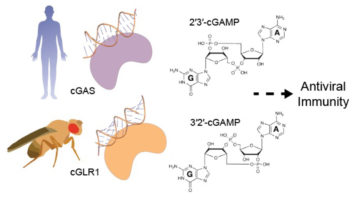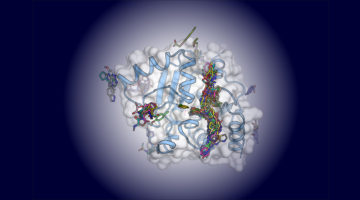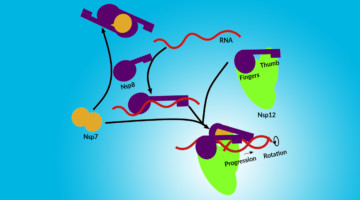Time-resolved, high-throughput, small-angle x-ray scattering improved the screening of small-molecule drug candidates, providing insight into how they stimulate structural transitions in protein targets. The work will speed the discovery of treatments designed to activate biomolecular dynamics associated with desired therapeutic outcomes. Read more »![]()
![]()
Mechanistic Insight into a Viral-Factory Component
Recent protein-structure studies conducted at the ALS provided mechanistic insights into the function of a protein (σNS) involved in viral replication. Understanding these mechanisms will foster the development of therapeutic strategies against viruses that use σNS-like proteins to replicate. Read more »
How Structure Affects the Activity of Lipid Nanoparticles
Berkeley Lab and Genentech scientists related the internal structures of lipid nanoparticles to their efficacy at drug delivery, using a combination of methods including x-ray scattering at the ALS. The work promises to expedite the development of drug delivery systems for the treatment of diseases such as COVID-19 and cancer. Read more »![]()
![]()
Deep-Learning AI Program Accurately Predicts Key Rotavirus Protein Fold
Rotaviruses are the major causative agents of gastroenteritis worldwide. Attempts to design vaccines are complicated by the rotaviruses’ enormous genetic and immunological diversity. At the ALS, researchers validated the novel structure of a key rotavirus protein, predicted using AlphaFold2, a deep-learning artificial-intelligence program. Read more »
Molecular Hijacking of a MicroRNA by the Hepatitis C Virus
The hepatitis C virus (HCV), which attacks the liver, is known to repurpose host-cell components known as microRNAs—short RNA strands that act to silence gene expression. Now, the molecular structure of an HCV site bound to a microRNA complex revealed how their interactions shield the virus from the host cell’s protective response. Read more »
Rapid 3D Visualization of Lung Cells Altered by SARS-CoV-2
In this work, researchers illustrated the potential of soft x-ray tomography to rapidly characterize and quantify the structural changes induced in cells infected by SARS-CoV-2, revealing profound alterations of the subcellular architecture induced by viral infection over time. Read more »
An Antibody That Broadly Neutralizes SARS-CoV-2
An antibody that appears to neutralize all known SARS-CoV-2 strains and closely related coronaviruses was discovered with the help of the ALS. The work highlights principles underlying antibody potency, breadth, and escapability that can guide the development of therapeutics against the current and potential future pandemics. Read more »![]()
![]()
Sounding the Antiviral Alarm: A New Family of Immune-System Sensors
Comparison of enzyme structures from humans and insects revealed a new family of evolutionarily related immune-system sensors, triggered by viral RNA or DNA to produce tailored signals that initiate antiviral action. The results shed new light on the diversity and development of immune defenses in animals. Read more »
Sifting through Fragments for COVID-19 Treatments
COVID-19 vaccines are essential for preventing serious disease, but the identification of new drugs is still necessary for the treatment of patients who become sick as a result of SARS-CoV-2 infection. Here, scientists used computational docking and crystallography to screen large numbers of small molecules for potential use in drug compounds. Read more »
Assembly of the SARS-CoV-2 Replication Mechanism
Using a multimodal approach that included x-ray scattering at the ALS, researchers determined how components of the SARS-CoV-2 replication mechanism fit together. A better understanding of how this protein complex works provides insight into potential structural or functional weak spots to exploit for drug development. Read more »![]()
![]()
- 1
- 2
- 3
- …
- 5
- Next Page »









